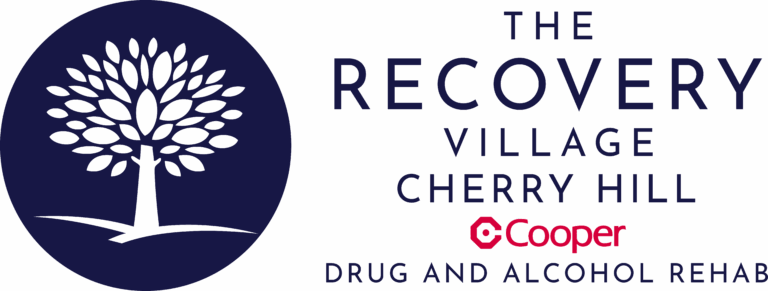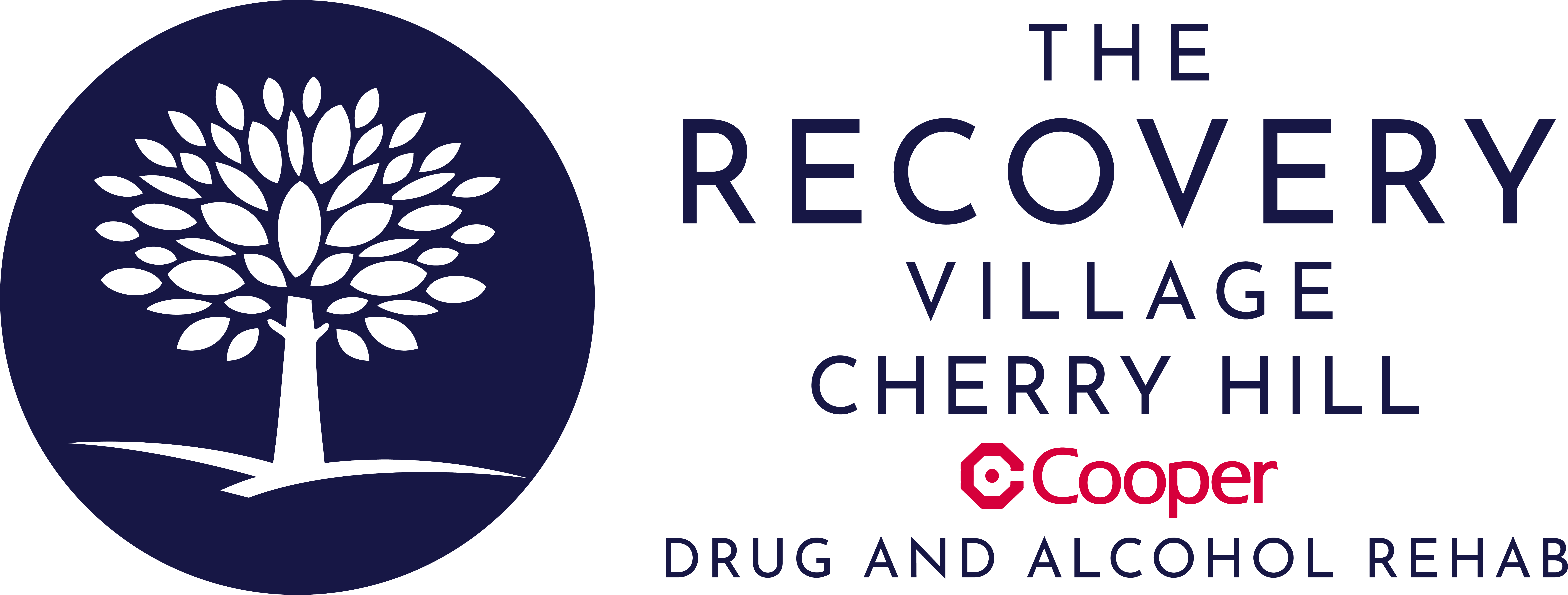Overcoming alcohol addiction is difficult, but The Recovery Village Cherry Hill at Cooper can help those struggling with alcohol abuse.
Alcohol is legal among individuals 21 and older, but that doesn’t mean it’s not addictive. According to data from the National Institute on Alcohol Abuse and Alcoholism, 14.1 million Americans aged 18 and older have an alcohol use disorder, the clinical term for alcohol addiction. When a person develops an addiction to alcohol, treatment can help them overcome addiction and reduce the negative consequences of alcohol misuse.
What Is Alcoholism, or Alcohol Use Disorder?
According to the 2021 National Survey on Drug Use and Health (NSDUH), 10.6% of the population 12 and older had an alcohol use disorder at some point in 2021. However, only 6.3% of people needing substance use treatment received help. The Diagnostic and Statistical Manual of Mental Disorders-5 (DSM-5) defines AUD as a “problematic pattern of drinking leading to clinically significant impairment and distress for at least 12 months” and has outlined 11 criteria for AUD. When people use the term “alcoholism,” they are often referring to an AUD, which is the proper term.
Related Topic: Alcohol Abuse vs. Alcoholism
Recovery Can Be Life Changing
Whether you or a loved one is struggling with addiction, our expert team is here to guide you every step of the way. Don’t wait— reach out today to take the first step toward taking control of your life.
“My life has became something that I’m proud of and something I can be grateful for.“
– Joseph McDermott, The Recovery Village Cherry Hill Alumni
Causes of Alcohol Addiction
There is no single cause of alcohol addiction. Instead, an alcohol use disorder develops in response to a combination of potential risk factors, which can include:
- Amount of alcohol consumed: Heavy alcohol use and binge drinking increase the risk that a person will become addicted to alcohol.
- Early onset of drinking: People who begin drinking before age 15 are over five times more likely to become addicted to alcohol than those who start drinking at age 21 or later.
- Genetics/family history: Genetic risk factors contribute to alcohol use disorder; therefore, alcohol addiction tends to run in families. However, it is more than genetics at play. Parents’ drinking habits can also influence children and contribute to a family history of alcohol use disorder.
- Mental health conditions: Mental health disorders, including depression, post-traumatic stress disorder and ADHD, can increase the risk of developing alcohol addiction.
Signs and Symptoms of Alcohol Addiction
Some common signs of alcohol use disorder can help people determine whether they or someone they love is at risk for developing an AUD can include:
- Loss of interest in hobbies or activities
- Avoiding social events that don’t serve alcohol
- Drinking alone
- Drinking during the day
- Hiding alcohol use
- Drinking and driving
Symptoms of alcohol use disorder are experienced by those who have developed alcohol dependence and often include:
- Being unable to cut down or stop drinking
- Preoccupation with alcohol
- Drinking despite negative health and/or social consequences
- Requiring large amounts of alcohol to achieve the desired effect
- Drinking to prevent withdrawal
Are you struggling with Alcohol addiction? We are here for you.
Health Conditions Related to Alcohol Abuse
Alcoholism increases the risk of addiction and harms your health. Excessive drinking is associated with the following health problems:
- Risky sexual behavior leading to an unplanned pregnancy and sexually transmitted infections
- High blood pressure
- Stroke
- Heart disease
- Liver disease
- Digestive issues
- Immune system problems
- Increased risk of dementia
- Development of mental health problems, including depression and anxiety
- Higher risk of cancer, including cancer of the breast, mouth, throat, esophagus, voice box, liver, colon and rectum
Stages of Alcoholism
The three main stages of alcoholism include early, middle and end (or late). Some addiction experts include a fourth “pre-alcoholic” stage to describe the alcohol abuse that precedes the development of AUD.
Stage 1: Early Stage Alcoholism
Early-stage alcoholism is characterized by increasing alcohol use and developing tolerance, but without necessarily drinking so much that it becomes obviously problematic. However, it is important to understand that excessive consumption leads to alcohol dependence, meaning the brain depends on alcohol to function without experiencing debilitating withdrawal symptoms. People with early-stage alcoholism have developed some tolerance and dependence but can function normally without alcohol.
Signs of early-stage AUD include:
- Drinking more frequently than normal
- Drinking to manage stress, boredom or loneliness
- Preferring social activities that include alcohol
- Creating reasons to use alcohol
Stage 2: Middle-Stage Alcoholism
People with middle-stage alcoholism require alcohol to function normally. Chronic excessive alcohol use is associated with developing physical alcohol dependence. Middle-stage alcoholics need alcohol to feel normal, and if they don’t drink, they will experience uncomfortable withdrawal symptoms like trembling, nausea, sweating and irritability.
Signs of middle-stage AUD include:
- Drinking habitually in non-social settings
- Loss of interest in alcohol-free social activities
- Strained relationships with friends and loved ones
- Withdrawal symptoms set in when alcohol isn’t being consumed
Related Topic: Effects of Everyday Drinking
Stage 3: End-Stage Alcoholism
People who reach end-stage alcoholism are physically dependent on alcohol. Drinking is not an option but a requirement. End-stage alcoholics have a high risk for serious and even life-threatening diseases like alcoholic liver disease and cardiovascular disease.
People with end-stage alcoholism cannot safely quit drinking on their own. Chronic heavy alcohol use causes substantial changes in brain chemistry, most notably by increasing levels of the inhibitory neurotransmitter GABA and reducing the effectiveness of the excitatory neurotransmitter NMDA. The combined effect of these changes reduces overall brain activity. If someone in end-stage alcoholism abruptly quits drinking, GABA and NMDA levels quickly return to normal, effectively removing the “brake” on activity in brain cells. The result is cellular hyperexcitability, which can cause seizures, delirium tremens or a heart attack.
Signs of late-stage AUD include:
- Malnutrition
- Cognitive decline
- Erratic behavior
- Financial and/or legal troubles
- Serious health problems
Related Topic: Effects of Everyday Drinking
Withdrawal & Detox Process
Anyone who wants to quit drinking should make an appointment with an addiction specialist who can help them make a plan. Alcohol withdrawal symptoms can be dangerous and may require medical intervention, so alcohol detoxification should be done under professional supervision.
Alcohol Withdrawal Symptoms
Even people with early-stage AUD may experience the following withdrawal symptoms when they aren’t drinking:
- Headache
- Irritability
- Anxiety
- Cravings
- Insomnia (See: How to Sleep without Alcohol)
- Restlessness
Withdrawal symptoms associated with middle and end-stage AUD include:
- Pronounced tremors
- Profuse sweating
- Low-grade fever
- Nausea/vomiting
- Diarrhea
- Rapid breathing and heart rate
- Psychomotor agitation (repetitive, purposeless motions)
- Increased anxiety and emotional stress
Severe alcohol withdrawal may include additional symptoms that can be life-threatening without medical intervention. Dangerous symptoms of alcohol withdrawal include:
- Respiratory depression
- Seizures
- Delirium tremens (hallucinations, delirium, confusion, loss of touch with reality)
- Heart attack
Alcohol Withdrawal Timeline
Early, middle and end-stage alcohol withdrawal have slightly different timelines, and the duration can differ to some degree between individuals. Symptom onset generally occurs six to eight hours after the last drink. Mild and moderate withdrawal symptom severity peaks around 72 hours after the last drink and often resolves within about one week. Severe AUD withdrawal can take several weeks to resolve fully.
Post-acute withdrawal syndrome (PAWS) is a frustrating phenomenon that affects a minority of people who completed detox and acute withdrawal. PAWS is characterized by persistent withdrawal symptoms that fluctuate in intensity and may last for weeks, months or, in extreme cases, years after quitting drinking.
Related Topic: How Long Does it Take to Detox from Alcohol?
Alcohol Addiction Treatment in New Jersey
Overcoming alcohol use disorders can be challenging, but several treatment options exist. Importantly, anyone who wants to quit drinking should seek a consultation with an addiction specialist.
Comprehensive alcoholism treatment often involves medical detox, residential rehab, outpatient rehab and aftercare:
- Medical detox: In some cases, alcohol withdrawal can be very dangerous. Medical detox provides 24/7 supervision by medical professionals who can intervene in the case of complications, and medications that can reduce withdrawal symptom severity may be prescribed.
- Residential rehab: Most people transition into a residential (inpatient) rehab program following medical detox. Residential rehab provides a safe environment and evidence-based treatments like cognitive behavioral therapy to help people overcome addiction and learn how to manage stress, triggers and temptation. Patients in this level of care live on-site at a facility.
- Outpatient rehab: People in early-stage AUD might start their recovery in an intensive outpatient program, while others will move into outpatient treatment after completing a residential program. Outpatient rehab options range from intensive programs that require a substantial time commitment to weekly therapy sessions.
- Aftercare: For many people, aftercare programs are important in long-term recovery from AUD. Aftercare programs differ quite a bit, but the goal is the same: Provide people in recovery with resources and support as they reorient to a sober lifestyle.
Relapse rates are high among people with alcohol use disorder, but evidence supports that professional inpatient treatment programs reduce relapse rates, especially for people with end-stage alcoholism.
Treating Alcohol Use Disorder
Sometimes, it may be necessary for friends and family to come together to discuss their concerns with a loved one and convince the person to seek treatment for alcohol addiction. When concerned loved ones meet to encourage alcohol treatment, it is called an intervention.
The following intervention types are common for individuals who live with alcohol use disorder:
- The Simple Intervention: A simple intervention is a one-on-one confrontation in which a single person approaches a person with an addiction to express their concerns. If you have a person in your life, such as a parent, child, sibling, friend or spouse, with addiction, you might consider speaking to them one-on-one to encourage them to seek alcohol treatment.
- The Classical Intervention: The classical intervention is probably what most people picture when they think of drug and alcohol interventions. This is the traditional intervention method in which a group of concerned loved ones comes together to confront a loved one about their addiction.
- Family System Intervention: You have probably heard people state that addiction is a family disease, and there is some truth to that. Sometimes, a person’s addiction continues because family members engage in enabling behaviors, such as providing the person with the addiction with money or helping them hide their addiction. A family system intervention addresses the behaviors of the entire family to help them stop enabling addiction.
- Crisis Intervention: Crisis interventions are born out of necessity soon after a dangerous situation occurs. These interventions may lack the planning and structure of others. At a crisis moment, such as after a drug overdose or an arrest, family members may come together to convince a person it’s time to seek treatment. This might involve immediately entering a medical detox program.
Get Admitted Today
If you’re seeking alcohol treatment for yourself or a loved one, The Recovery Village Cherry Hill at Cooper is here to help. Our facility is conveniently located within the heart of New Jersey, under 20 minutes from Philadelphia. We have a full range of treatment options, including inpatient care, partial hospitalization programming and intensive outpatient services. We offer a state-of-the-art inpatient facility and have specialized options for trauma, including EMDR and group therapy for trauma.
If you or a loved one are ready to begin the journey toward a substance-free life, we’re standing by to take your call. Reach out to our Recovery Advocates to learn more about our treatment programs and find a plan that works well for your specific needs and situation.
Alcohol Abuse FAQs
What Is the Most Effective Treatment for Alcohol Dependence?
There is not one single treatment that works for everyone dependent on alcohol. Quality treatment should be tailored to a patient’s unique needs. Alcohol use disorder is often treated with counseling, medications and/or support groups.
How Long Is Alcohol Rehab?
How long a person spends in alcohol rehab depends on how severe their alcohol addiction is and their unique needs. The National Institute on Drug Abuse recommends that people stay in treatment for at least three months to achieve the best outcomes. For example, if you participate in 30-day inpatient rehab, you should transition into aftercare alcohol treatment, such as outpatient counseling, and remain in treatment for a sufficient time.
How Much Does Alcohol Rehab Cost?
The cost of alcohol treatment can differ significantly, as it depends on several factors, including how long you spend in rehab, the level of treatment you seek and if you have insurance to cover the cost of treatment. Inpatient programs are more expensive than outpatient care, and luxury facilities that offer many amenities will cost more than a bare-bones facility. In most cases, insurance will cover some of the costs of treatment. It’s important to discuss costs with your insurance provider or verify your insurance benefits with your rehab facility.
How Does Alcohol Rehab Work?
How the alcohol rehab process works depends on the specific type of treatment you complete. In many cases, alcohol treatment begins with a medical detox program to help patients manage withdrawal side effects. After completing detox, it’s important to transition into an ongoing treatment program. Some people will go straight from medical detox to residential treatment, whereas others may transition to an outpatient program within the community. Treatment usually involves many services, including individual and group counseling, medication management and support groups.










